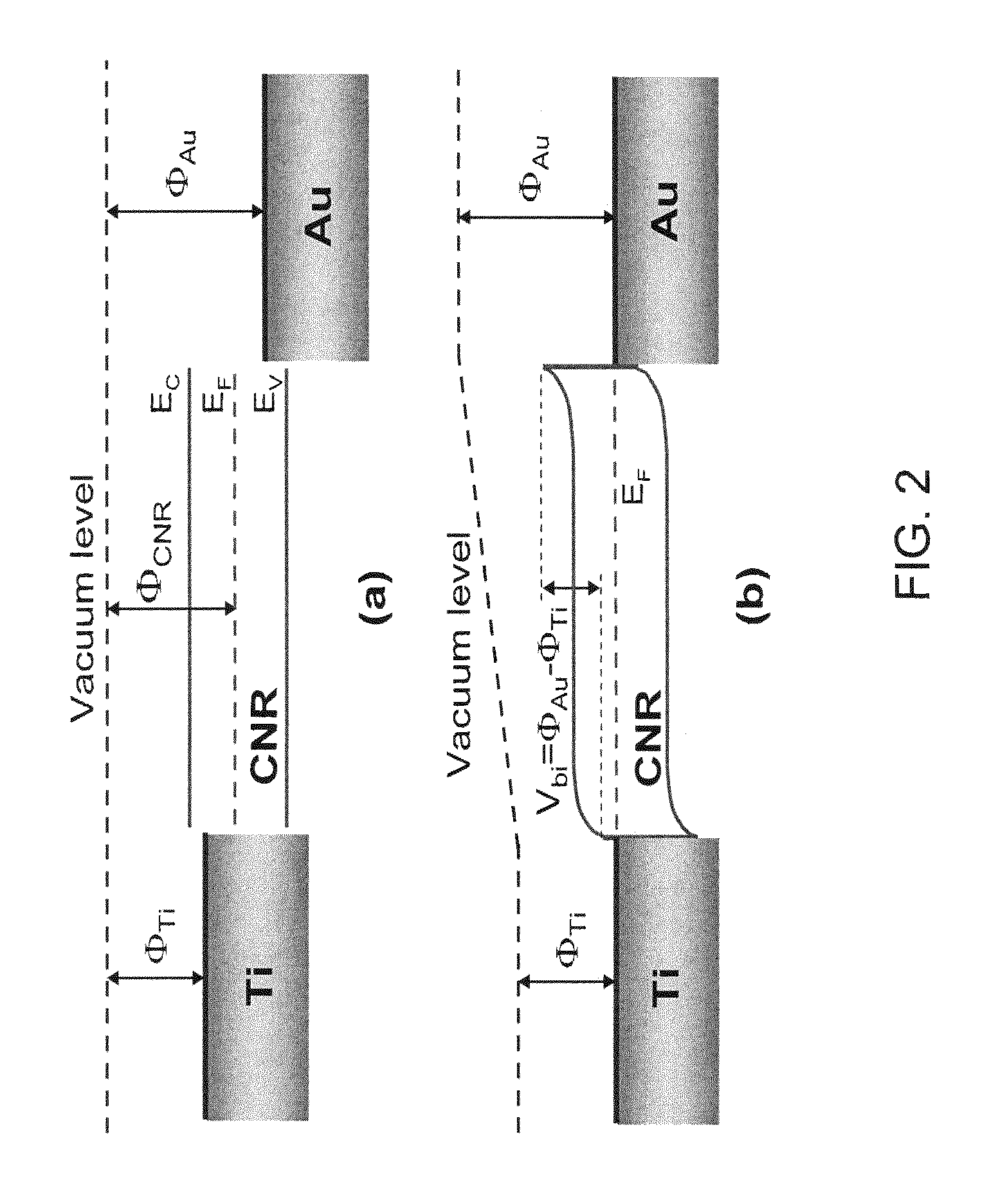Graphite-based photovoltaic cells
a photovoltaic cell and graphite technology, applied in the field of graphite-based photovoltaic cells, can solve the problems of insufficient cost per watt for most photovoltaic cells, insufficient cell efficiency and cell cost, and the use of photovoltaic cells in the world, so as to achieve efficient solar spectrum absorption, efficient and inexpensive manufacturing, and different band gaps
- Summary
- Abstract
- Description
- Claims
- Application Information
AI Technical Summary
Benefits of technology
Problems solved by technology
Method used
Image
Examples
Embodiment Construction
[0017]The present invention uses lithographically patterned graphite stacks as the basic building elements of efficient and economical photovoltaic cells. The basic design of the graphite-based photovoltaic cells includes a plurality of spatially separated graphite stacks, each comprising a plurality of vertically stacked semiconducting graphene sheets (carbon nanoribbons) bridging electrically conductive contacts. The contact materials, which are typically two different metals, have different work functions in Schottky contact with the nanoribbons of the graphite stacks, which generates a built-in potential in the nanoribbons.
[0018]The present photovoltaic cells take advantage of the fact that the electronic properties of patterned nanoribbons exhibit a dependence on the nanoribbon direction (chirality) and width that is analogous to the dependence of the electronic properties of single-walled carbon nanotubes (SWNT) on tube diameter and chirality. A nanotube is often viewed as a r...
PUM
 Login to View More
Login to View More Abstract
Description
Claims
Application Information
 Login to View More
Login to View More - R&D
- Intellectual Property
- Life Sciences
- Materials
- Tech Scout
- Unparalleled Data Quality
- Higher Quality Content
- 60% Fewer Hallucinations
Browse by: Latest US Patents, China's latest patents, Technical Efficacy Thesaurus, Application Domain, Technology Topic, Popular Technical Reports.
© 2025 PatSnap. All rights reserved.Legal|Privacy policy|Modern Slavery Act Transparency Statement|Sitemap|About US| Contact US: help@patsnap.com



